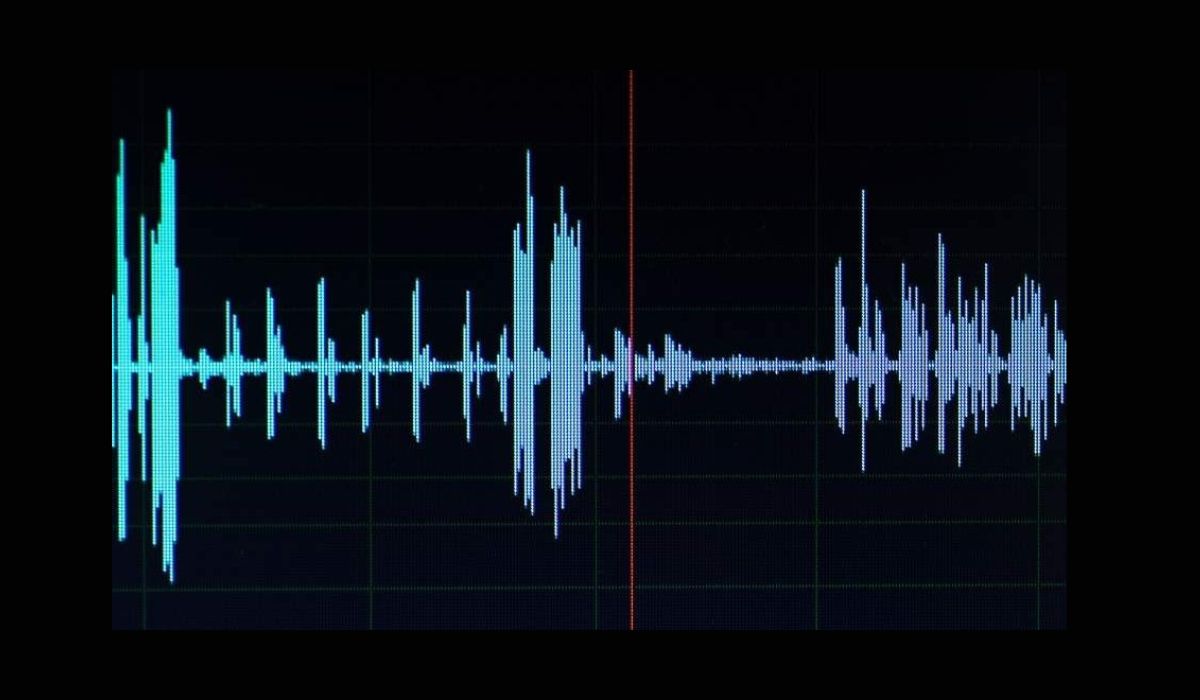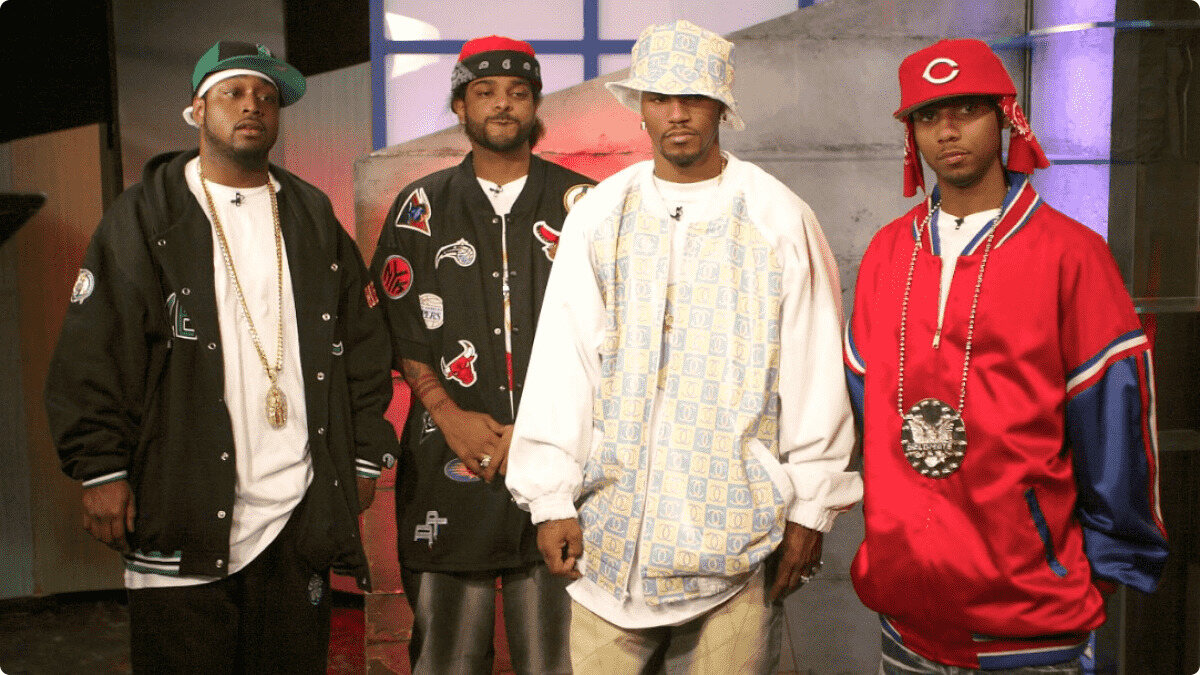Home>Genres>Hip Hop>What Is The Low Frequency Of Hip Hop Songs


Hip Hop
What Is The Low Frequency Of Hip Hop Songs
Modified: January 22, 2024
Discover the low frequency elements in hip hop songs and how they contribute to the overall sound. Explore the unique characteristics of hip hop music.
(Many of the links in this article redirect to a specific reviewed product. Your purchase of these products through affiliate links helps to generate commission for AudioLover.com, at no extra cost. Learn more)
Table of Contents
Introduction
Welcome to the world of hip hop, where the beats are infectious, the rhymes are clever, and the bass hits you right in the chest. One of the key elements that sets hip hop apart from other genres is its unique use of low frequency sounds. These low frequencies, also known as bass, play a crucial role in defining the overall sound and feel of hip hop music.
When we talk about low frequency in the context of music, we are referring to the range of sounds that lie on the lower end of the audio spectrum. These frequencies typically range from 20 Hz to 250 Hz and can be felt more than heard. They provide the foundation, the rumble, and the power that make hip hop beats so irresistible.
Low frequency sounds are not exclusive to hip hop, but they hold a special place in the genre. The pulsating and deep basslines in hip hop tracks create a sense of rhythm and groove that is unparalleled. They provide the backbone upon which the rest of the music is built, and they contribute greatly to the overall energy and impact of a song.
As listeners, we are instinctively drawn to the power of low frequency sounds. They have the ability to physically move us, to make our bodies vibrate in sync with the music. Whether we’re listening through headphones, car speakers, or at a live concert, the presence of strong low frequencies can be felt on a visceral level.
In the world of hip hop, the low frequency elements are carefully crafted and engineered to create a specific sonic experience. Producers and engineers use various techniques to shape and enhance the low end of a track, ensuring that it hits hard and leaves a lasting impression.
In this article, we will explore the importance of low frequency in hip hop songs, the characteristics of low frequency sounds in hip hop, the production techniques used to achieve impactful low frequencies, the impact of low frequencies on listeners, and the challenges faced in achieving a perfect low-frequency balance in hip hop music.
Definition of Low Frequency
Before diving deep into the world of low frequency in hip hop, let’s first understand what exactly low frequency means in the context of music.
Low frequency refers to the range of sounds that fall on the lower end of the audible spectrum. In scientific terms, it typically represents frequencies ranging from 20 Hz to 250 Hz. These frequencies are characterized by their deep, rumbling, and resonate qualities.
When we listen to music, low frequency sounds are responsible for the bass and the thumping vibrations that we feel in our bodies. They provide the foundation and add depth to the overall sound. In hip hop, the emphasis on low frequency sounds plays a crucial role in defining the genre’s unique sonic signature.
The low frequency range can be further categorized into sub-bass, mid-bass, and upper bass frequencies. Sub-bass frequencies are the deepest and lowest tones, adding weight and power to the music. They are often felt more than heard and create a sense of intensity and presence. Mid-bass frequencies add warmth and define the body of the sound, while upper bass frequencies provide clarity and punch.
It’s important to note that the perception of low frequency sounds can be subjective and can vary depending on the listener and the playback system. Factors such as the quality of speakers or headphones, the acoustics of the listening environment, and personal preferences can all influence how low frequencies are perceived.
In the context of hip hop music, the use of low frequency sounds is a crucial element in creating the genre’s signature sound. The deep basslines and heavy-hitting beats rely on well-crafted low frequency elements to captivate listeners and drive the energy of the music.
Now that we have a clear understanding of what low frequency means in the world of music, let’s explore its significance in hip hop and its role in shaping the genre’s sound.
Importance of Low Frequency in Music
In the world of music, low frequency sounds hold immense importance as they contribute to the overall impact, depth, and emotion of a composition. Let’s explore the significance of low frequency in music and specifically in hip hop genre.
1. Foundation and Rhythm: The low frequencies serve as the foundation of a song, providing a solid and rhythmic backbone. In hip hop, the basslines establish the groove and drive the momentum of the track. They create a platform for other elements to build upon, giving the music its infectious and head-nodding quality.
2. Impact and Emotion: Low frequency sounds have the power to evoke strong emotions in listeners. The deep and resonate bass frequencies create a sense of intensity and energy that can be felt deep within the body. In hip hop, this impact is crucial in enhancing the emotional connection between the music and the listener.
3. Dynamic Contrast: Low frequency elements create a contrast in the overall sonic landscape of a song. They provide a counterbalance to the higher frequency elements, such as vocals or melodic instruments. This contrast leads to a fuller and more balanced sound, adding depth and dimension to the music.
4. Energy and Movement: Low frequency sounds contribute to the sense of movement and energy in a composition. In hip hop, the powerful basslines drive the music forward, creating a sense of momentum and irresistible groove. They make the music more engaging and encourage physical movement, whether it’s head bobbing, dancing, or simply tapping along to the beat.
5. Musical Complexity: Low frequencies add complexity and texture to the overall sound. They create layers and depth, making the music more interesting and captivating. In hip hop, the intricate basslines and sub-bass elements demonstrate the creativity and skill of the producers and add richness to the sonic landscape.
6. Genre Identity: In certain genres, such as hip hop, low frequency sounds have become synonymous with the genre’s identity. They have become a defining characteristic that sets hip hop apart from other genres. The distinct bass-heavy sound of hip hop has influenced the culture and the evolution of the genre.
Overall, the importance of low frequency in music cannot be overstated. In hip hop, the strategic use of low frequency elements plays a vital role in creating the genre’s unique and captivating sound. The deep basslines, powerful sub-bass, and overall low-end presence contribute to the energy, emotion, and appeal of hip hop music.
Now that we understand the significance of low frequency in music, let’s explore the specific characteristics of low frequency sounds in hip hop songs.
Characteristics of Low Frequency in Hip Hop Songs
When it comes to hip hop, low frequency sounds play a crucial role in defining the genre’s unique sonic characteristics. Let’s explore the key features and characteristics of low frequency in hip hop songs:
1. Punch and Impact: In hip hop, the low frequency elements are often characterized by a hard-hitting, punchy quality. The basslines and sub-bass notes are designed to deliver a powerful impact that can be felt in the listener’s chest. This characteristic is essential in creating the energetic and dynamic feel that defines hip hop music.
2. Sonic Depth and Warmth: The low frequency sounds in hip hop provide a sense of depth and warmth to the music. They add a layer of richness and fullness, making the overall sound more immersive and engaging. The deep, resonant bass tones create a sonic foundation that captures the listener’s attention.
3. Groove and Rhythm: Hip hop is known for its infectious grooves and captivating rhythms, and the low frequencies play a significant role in establishing these elements. The carefully crafted basslines help to create a rhythmic foundation that drives the beat and encourages movement. They provide a sense of groove that is essential to the genre’s appeal.
4. Sub-bass Movement: Sub-bass frequencies, which are the deepest and lowest tones, are often used to create movement and variation within a hip hop track. Producers will employ techniques such as pitch slides, modulation, and dynamic filtering to give the sub-bass elements a sense of motion. This adds an extra layer of excitement and complexity to the music.
5. Frequency Separation: Hip hop producers carefully separate the different frequencies and instruments within a track to maintain clarity and avoid muddiness. The low frequencies, including the basslines and kick drums, are often given their own space in the mix, allowing them to stand out while still complementing the other elements in the song.
6. Melodic Elements: While low frequency sounds in hip hop are primarily associated with basslines and beats, melodic elements can also occupy the low end of the frequency spectrum. Instruments such as synthesizers and keyboards are often tuned to lower pitches to add depth and texture to the music while providing a melodic element to the composition.
In summary, the low frequency characteristics in hip hop songs encompass punch, impact, depth, warmth, groove, rhythmic foundation, sub-bass movement, frequency separation, and melodic elements. These characteristics work together to shape the distinct sound that we associate with hip hop music. Next, let’s explore the production techniques that are commonly used to achieve the desired low frequency elements in hip hop songs.
Production Techniques for Low Frequency in Hip Hop Songs
Producing hip hop songs involves careful attention to the low frequency elements to achieve the desired impact and groove. Here are some common production techniques used to enhance the low frequency in hip hop music:
1. Synthesizers & Sub-Bass Instruments: Producers often use synthesizers or dedicated sub-bass instruments to create the deep and powerful low frequency sounds. These instruments allow for precise control over shaping the bass tones to ensure they hit hard and resonate in the mix.
2. Layering & Stacking Basslines: Layering multiple basslines can add depth and complexity to the low frequency range. By combining different bass sounds with varying timbres and tonal qualities, producers can create a more textured and impactful bassline.
3. EQ (Equalization): Applying EQ techniques is crucial in shaping the low end of a hip hop track. Producers use EQ to enhance the desired frequencies and reduce any unwanted muddiness or frequency clashes. Boosting the low end can add weight and presence to the basslines, while cutting any unnecessary frequencies can clean up the mix.
4. Sidechain Compression: Sidechain compression is a technique where the bassline is ducked or reduced momentarily when the kick drum hits. This technique adds rhythmic pumping and helps prevent the bass frequencies from clashing with the kick drum, allowing both elements to shine individually.
5. Subtractive Synthesis: Subtractive synthesis involves starting with a rich, harmonically dense waveform and then using filters to sculpt the sound. Producers can use this technique to create clean, focused bass sounds and remove any unwanted frequencies in the low end.
6. Layered Drum Sounds: Layering drum sounds such as kick drums and snares can contribute to the overall low frequency presence. Combining multiple samples with different characteristics, like a punchy kick drum and a sub-heavy kick drum, can create a more impactful and full-bodied drum sound.
7. Saturation and Distortion: Introducing subtle saturation or distortion to the low frequency sounds can add warmth and harmonics, making them more present and satisfying to listen to. Careful use of these effects can enhance the character and texture of the bass elements.
8. Mixing and Panning: Paying attention to the mix and panning of low frequency sounds is essential. Ensuring that they are balanced and sitting well in the stereo field can prevent any phase cancellation or muddiness that can occur in the low end.
These techniques, among others, are employed by hip hop producers to achieve the desired low frequency elements in their tracks. By carefully crafting the basslines, enhancing the sub-bass tones, and utilizing various production techniques, they aim to create powerful and impactful low frequency sounds that are integral to the genre’s signature sound. Next, let’s explore the impact of low frequency in hip hop songs on listeners.
Impact of Low Frequency in Hip Hop Songs on Listeners
The presence of low frequency sounds in hip hop music has a significant impact on listeners. These powerful bass elements evoke various emotional and physical responses, making them a crucial component of the genre’s appeal. Let’s explore the impact of low frequency in hip hop songs on listeners:
1. Physical Sensation: Low frequency sounds have the ability to physically move listeners. The deep bass vibrations can be felt in the body, creating a visceral experience that adds another layer of enjoyment to the music. This physical sensation contributes to the immersive nature of hip hop songs.
2. Emotional Connection: The impact of low frequency sounds in hip hop extends beyond physical sensations. The deep basslines and rumbling sub-bass tones can evoke strong emotional responses in listeners. The power and intensity of these low frequencies add depth and create a sense of connection to the music.
3. Energetic Response: Hip hop, with its energetic beats and captivating basslines, often elicits a natural urge to move and dance. The driving force of the low frequency sounds creates a rhythmic foundation that compels listeners to groove and engage with the music on a physical level. It brings an infectious energy to the music.
4. Enhanced Dynamics: The contrast between the low frequency sounds and other elements in hip hop songs, such as vocals or melodies, enhances the overall dynamics and impact of the music. The presence of powerful low frequencies adds depth and dimension, making the listening experience more engaging and exciting.
5. Memorable Hooks: In hip hop, catchy hooks and memorable melodies are often accentuated by low frequency elements. When a bassline or sub-bass sequence is well-crafted, it can become a defining part of the song, sticking in the listener’s mind long after the track has finished. The impact of these low frequencies contributes to the memorability of the song.
6. Genre Identification: The distinct sound of low frequency elements in hip hop contributes to the genre’s identification and recognition. When listeners hear powerful basslines and sub-bass tones, they immediately associate them with hip hop music. The impact of low frequency sounds has become an integral part of hip hop’s sonic identity.
7. Mood Enhancement: The low frequency elements in hip hop songs can set the mood and atmosphere of a track. Whether it’s a dark and ominous bassline or a bouncy and energetic sub-bass sequence, these sounds create a specific vibe that enhances the overall listening experience. The impact of low frequencies can evoke emotions and transport listeners to a particular sonic landscape.
In summary, the impact of low frequency in hip hop songs is multifaceted. It provides a physical sensation, establishes an emotional connection, drives energetic responses, enhances dynamics, creates memorable hooks, identifies the genre, and enhances mood. These impacts collectively contribute to the immersive and captivating listening experience that hip hop music offers. Next, let’s explore the challenges faced in achieving the perfect low frequency balance in hip hop songs.
Challenges in Achieving Low Frequency in Hip Hop Songs
While low frequency sounds are a fundamental element of hip hop music, achieving the perfect balance and impact can be a challenging task for producers and engineers. Let’s explore some of the common challenges faced in achieving the desired low frequency in hip hop songs:
1. Mix Clarity: Maintaining clarity in the mix, especially in the low frequencies, can be a challenge. The basslines, sub-bass elements, and kick drums all reside in the same frequency range, making it crucial to achieve a good balance. Too much low frequency content can result in a muddy mix, while too little can make the track sound thin and lacking in impact.
2. Speaker and Acoustic Limitations: The quality and capabilities of the playback system play a significant role in how low frequencies are perceived. Different speakers and listening environments can have varying frequency responses, which may result in a loss of detail or resonance in the low end. Producers need to consider these limitations when mixing and mastering to ensure their intended impact translates across different systems.
3. Phase Issues: Low frequency sounds can be particularly susceptible to phase cancellation and interference when combined with other elements in the mix. When multiple low frequency sources occupy the same frequency range, phase issues can occur, resulting in a loss of clarity and impact. Proper phase alignment and careful EQing can help mitigate these challenges.
4. Mix Translation: Achieving a balanced low frequency mix that translates well across various playback systems and environments can be a challenge. What sounds great in the studio may sound completely different on different headphones, car stereos, or club sound systems. Producers need to continually reference their mixes on various setups to ensure the desired low frequency impact is maintained.
5. Speaker Management: Low frequencies can put a strain on speakers and amplifiers, making it important to properly manage the energy being pushed through the system. Inadequate speaker management can result in distortion, loss of detail, or even speaker damage. Producers and engineers must consider appropriate system optimization and monitoring to handle the demands of low frequency elements.
6. Bass Balance: Achieving a balanced bassline that supports the rest of the music while still standing out as a prominent element can be a challenge. It’s important to find the right balance between the low frequencies and other elements in the mix to ensure a cohesive and impactful sound.
7. Subjective Perception: Perception of low frequency sounds can vary from person to person. What may sound good to one listener may not have the same impact on another. Producers need to take into account the target audience and their preferences when shaping the low frequency elements in their tracks.
By understanding and overcoming these challenges, producers and engineers can create hip hop songs that effectively deliver the desired impact and power of low frequency sounds. It requires careful attention to detail, a well-tuned listening environment, and an understanding of the target audience and playback systems. With practice and experience, these challenges can be overcome, resulting in impressive and impactful low frequency elements in hip hop music. Next, let’s wrap up our exploration of low frequency in hip hop songs.
Conclusion
The low frequency sounds in hip hop music play a critical role in defining the genre’s unique sonic identity. From the powerful basslines that establish the groove to the deep sub-bass tones that create impact, low frequency elements are integral to the energy, rhythm, and emotion of hip hop songs.
Throughout this article, we have explored the definition of low frequency, the importance of low frequency in music, the characteristics of low frequency in hip hop songs, production techniques used to enhance the low end, the impact of low frequency on listeners, and the challenges faced in achieving the perfect low frequency balance.
The low frequency sounds in hip hop not only provide a physical sensation, but they also create an emotional connection and enhance the overall listening experience. The powerful basslines, resonant sub-bass tones, and carefully crafted low frequency elements contribute to the genre’s infectious grooves, memorable hooks, and energetic responses from listeners.
However, achieving the desired low frequency impact in hip hop songs comes with its challenges. From maintaining mix clarity to managing speaker limitations and addressing phase issues, producers and engineers must navigate various technical and artistic obstacles to achieve a balanced and impactful low frequency mix.
Ultimately, the careful attention to low frequency elements sets hip hop apart and contributes to its enduring popularity. The visceral impact and emotional resonance of the low end create a sonic experience that captivates listeners and makes hip hop a genre that is felt as much as it’s heard.
As technology continues to advance and production techniques evolve, the role of low frequency in hip hop music will continue to evolve as well. Producers will find new ways to push the boundaries, create innovative basslines, and deliver even more engaging low frequency experiences for their listeners.
So, whether you’re vibing to the deep 808 bass in your headphones or feeling the thump of the subwoofers in a live concert, never underestimate the impact and power of low frequency in hip hop music. It’s the driving force that makes you nod your head, move your body, and get lost in the groove.











